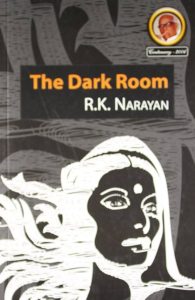One of India’s most well-known writers, R. K. Narayan, left behind a legacy of classic literary works that encapsulate the spirit of simplicity, humor, and Indian culture. His works, which frequently take place in the made-up town of Malgudi, have influenced readers of all ages. This essay will explore Narayan’s ten most well-known works that have stood the test of time and provide the ideal balance of humor, reality, and profound human experiences.
In Indian literature, R. K. Narayan is revered as a literary powerhouse. He was a major contributor to the world’s understanding of Indian daily life by means of his well developed characters, storytelling, and humor. Narayan is well known for his straightforward style and his capacity to capture the ordinary people’s lives with a deep sense of understanding.
His empathetic stories have stood the test of time, offering a universal human experience as well as a window into colonial India.
You may also like: Ahemdabad National Book Fair 2024: A Literary Fest At Sabarmati Riverfront
Top 10 Famous R. K. Narayan Books of All Time
R.K. Narayan’s famous novel “Swami and Friends” was initially released in 1935. The novel, which takes place in the made-up town of Malgudi, centers on the naughty but adorable young boy named Swaminathan (Swami) and his pals’ exploits.
The book does a great job of capturing the innocence of childhood and the challenges of growing up in India before independence.
Narayan’s classic work of Indian literature offers profound insights into interpersonal interactions and society standards through his deft storytelling and sense of humor.
You may also like: Psychological Thriller: Definition, Tips and How to Write
You may also read: All Colleen Hoover Books in Order Listed by Series & Date

Swami and Friends - R.K Narayana Books
2. The Bachelor of Arts
R.K. Narayan’s 1937 novel The Bachelor of Arts is a coming-of-age story that takes place in pre-independence India.
It centers on Chandran, a young guy attempting to make the adjustment from being a student to an adult. Indian youth divided between tradition and modernity are shown by Narayan through Chandran’s journey of self-discovery, rejection, and love.
The book is renowned for its straightforward but insightful examination of identity exploration, society expectations, and personal development.
You may also like: Book Review: Adult School by Anand S. Bose

The Bachelor of Arts - R.K Narayana Books
One of R. K. Narayan’s most well-known book, The Guide, was initially released in 1958. The protagonist of the tale is Raju, a dishonest tour guide who later becomes a spiritual advisor and a venerated holy figure.
The story, which is set in the made-up village of Malgudi, examines themes of human nature’s complexity, self-discovery, and atonement.
With its deft blending of comedy and thought-provoking philosophical problems, The Guide brought Narayan the 1960 Sahitya Akademi Award.
You may also read: Query Letter vs. Cover Letter: What’s the Difference?

The Guide - R.K Narayana Books
R.K. Narayan’s classic collection of short stories, Malgudi Days, is set in the made-up Indian village of Malgudi.
The novel, which was published in 1943, does a wonderful job of capturing the intricacy and simplicity of daily life in a tiny community. Narayan’s prose is full of wit, compassion, and astute insights of human nature.
Readers are provided with a window into the cultural and social dynamics of mid-20th century India with the introduction of enduring characters in each narrative, ranging from naive children to eccentric adults.

Malgudi Days - R.K Narayana Books
You may also like: Benefits of an Online Writing Community
R.K. Narayan’s 1938 novel The Dark Room is situated in the made-up town of Malgudi, which appears frequently in many of his writings.
The protagonist of the tale is Savitri, a homemaker stuck in an unpleasant union with her controlling husband, Ramani.
The book looks at issues including emotional abuse, gender inequity, and women’s quiet suffering in a patriarchal culture.
Narayan draws attention to the social and emotional obstacles that women in conventional Indian homes confront via Savitri’s hardships.
You may also like: How to Publish a Book? | Publish Your Book | BlueRoseOne
You may also like: Where the Red Fern Grows Book Summary & Themes

The Dark Room - R.K Narayana Books
Renowned Indian novelist R. K. Narayan’s gripping book A Tiger for Malgudi is set in the made-up town of Malgudi. Raja, the tiger protagonist of the tale, describes his transitions from a wild predator to a caged circus animal to, at last, a spiritual seeker receiving advice from a saint.
Narayan explores themes of freedom, evolution, and self-realization in a straightforward yet profound story, deftly fusing aspects of philosophy and fantasy.
You may also read: Ten Strategies to Handle Negative Reviews

A Tiger for Malgudi - R.K Narayana Books
7. Talkative Man
The talkative narrator in R. K. Narayan’s short novel Talkative Man lives in the made-up town of Malgudi. When a mysterious visitor named Dr. Rann, a self-described globe traveler and UN researcher, shows up in the village, the story takes a hilarious turn.
The narrator becomes intrigued by his peculiar behavior, which sets up a humorous story about the difficulties of interpersonal relationships, lying, and small-town living.
Throughout the entire book, Narayan’s wit and straightforward storytelling are evident.

Talkative Man - R.K Narayana Books
You may also like: What is a Mind Map? A Complete Guide for Authors
Mr. Sampath – The Printer of Malgudi is a novel by renowned Indian author R. K. Narayan, set in his fictional town of Malgudi.
The story revolves around Mr. Sampath, a charming and resourceful printer, and his partnership with Srinivas, the editor of a struggling newspaper.
Through their experiences, Narayan explores themes of ambition, human relationships, and the unpredictability of life.
Written with Narayan’s signature wit and simplicity, the novel captures the nuances of Indian society in the mid-20th century.
You may also like: The Mighty Red by Louise Erdrich: A Deep Dive into Her Latest Novel

The Printer of Malgudi - R.K Narayana Books
R. K. Narayan’s delightful book The World of Nagaraj delves into the lives of the modest and contemplative man named Nagaraj, who resides in the made-up town of Malgudi.
Nagaraj struggles with existential issues and the intricacies of contemporary life while he makes his way through his routine life.
Irony and comedy are deftly woven throughout the book, displaying Narayan’s signature storytelling approach. The novel explores themes of tradition, change, and the quest for purpose in day-to-day existence via Nagaraj’s experiences.
You may also like: List of Nobel Prize Winners in India (Updated)

The World of Nagaraj - R.K Narayana Books
“Under the Banyan Tree and Other Stories” by R. K. Narayan is a captivating collection of short tales that reflect the rich tapestry of life in the fictional Indiana town of Malgudi.
Published in 1931, the stories explore themes of tradition, culture, and human relationships through a blend of humor and poignancy.
Narayan’s vivid characters, from the whimsical to the profound, provide insight into Indian society, making the collection a poignant exploration of universal human experiences, all set against the backdrop of everyday life.
You may also read: How to Publish a Book? | Publish Your Book | BlueRoseOne

Under the Banyan Tree and Other Stories - R.K Narayana Books
R.K. Narayan’s reputation is rooted in his ability to extract profound insights and calm comedy from everyday life in Malgudi and beyond. From the benign adventures of Swami and Friends to the introspective voyages of The Bachelor of Arts and The Guide, his stories provide a timeless investigation of human nature.
Malgudi Days memorialized the lovely minutiae of small-town India, yet pieces like The Dark Room and A Tiger for Malgudi demonstrate his ability to face broader societal and spiritual topics.
Each of the ten books on this list reflects a distinct aspect of Narayan’s narrative brilliance, whether it be coming-of-age, societal critique, or philosophical introspection.
Together, they weave a complex tapestry that continues to captivate readers throughout the world. For both longstanding fans and newbies, this book is the ideal introduction to a literary world marked by simplicity, empathy, and the universal search for meaning.
















